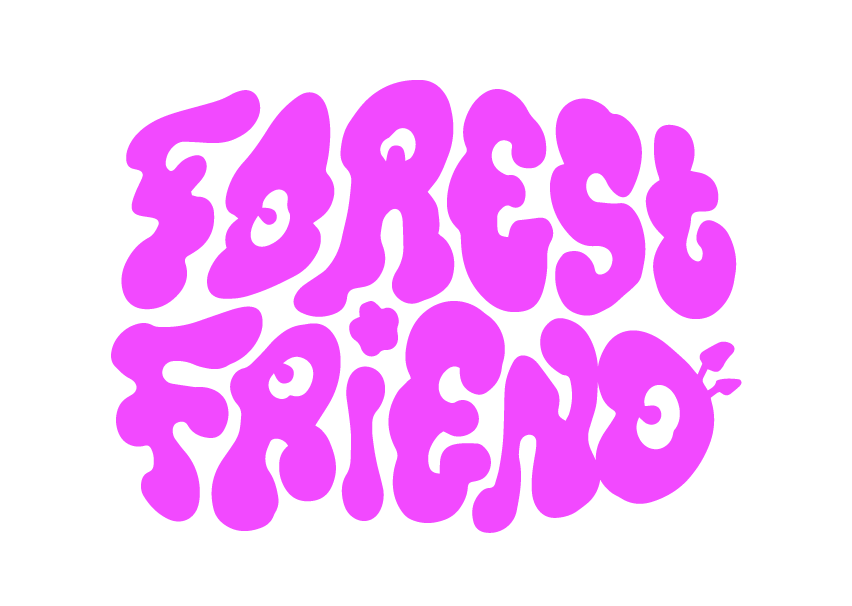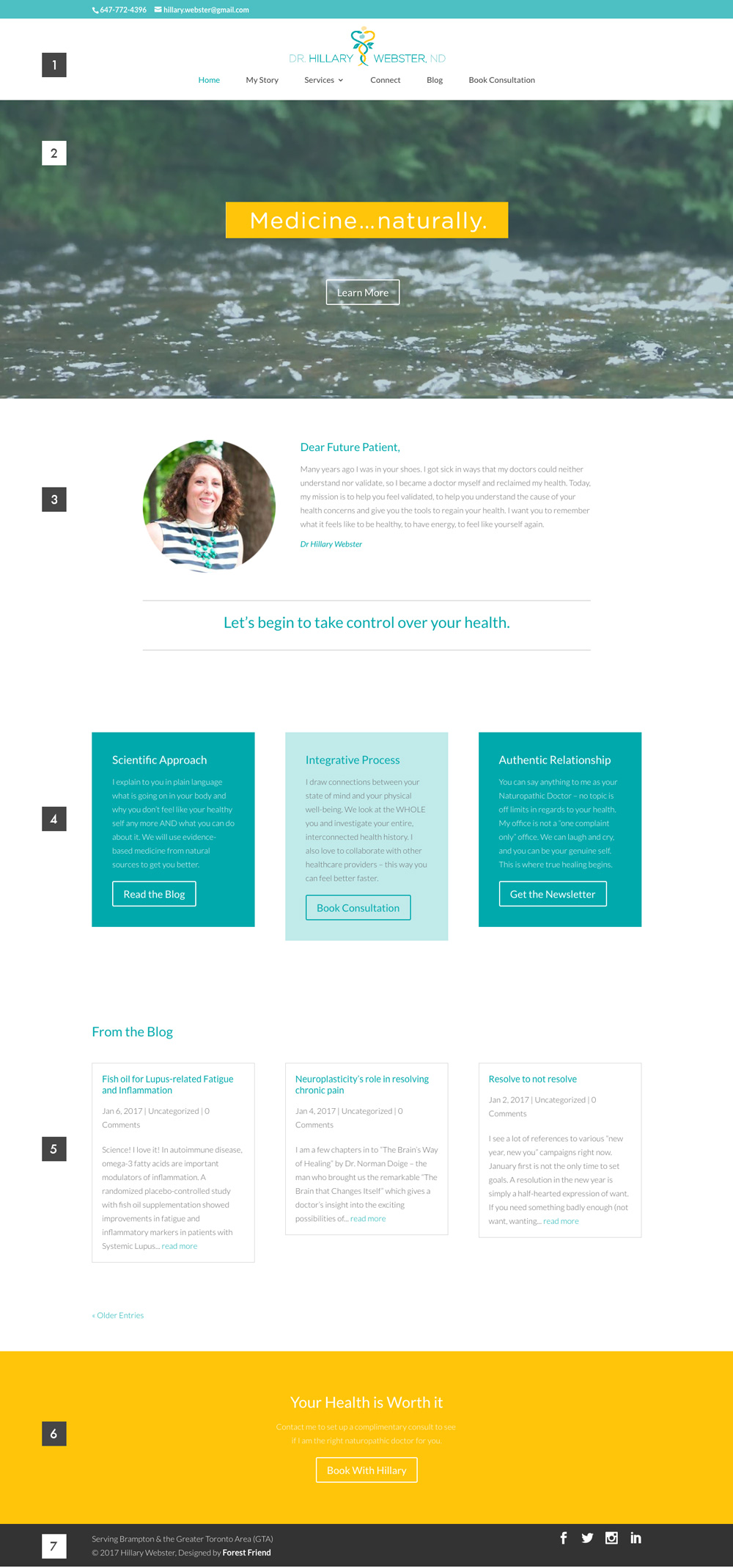No matter what the content/purpose of your website, there are certain things that all websites need…
…in order to orient and shepherd your visitors towards the things you want them to see and interact with. Use the example below to help you structure the home page in a pleasing and comprehensive way.
An example from an in-progress client site:
1. Logo & colours
These elements distinguish your website as part of your brand — that is, something that YOU made, not the WordPress theme creator.
Your logo can be as simple as the name of your site (as short and sweet as possible) in a chosen font in your header. If the name of your site is not self-explanatory, include and tagline sentence. Usually, header logos are in png format to preserve transparency. You can make one yourself, hire a designer or buy one from a site like Stock Logos.
Choose a set of maximum 3 colours to use throughout your site. One should be a bright colour for buttons and other attention-attracting elements.
2. Hero Image
Your choice of imagery says a lot about the purpose and tone of your website. Choose a large “hero” image or series of images (called a slider or slideshow) and, if your theme allows, add succinct sentences of text overtop of your image(s). Find high res, free stock photos at pexels.com
Many themes also allow video to play in the header area. You can search for free stock footage online, including Pexels Video.
3. Descriptive Sentence
This should be a short, punchy descriptive sentence (or short paragraph) about the purpose of your site. It should answer the questions who, what and where.
4. Calls to Action (OPTIONAL)
If the purpose of your site is to drive users to perform a specific action, use a sentence to describe that action (and the benefit for the user). Pair it with a button to start them on a journey towards that action. Up to 3 calls to action is common.
5. Portfolio or News Feed (OPTIONAL)
Give your users an additional sneak peek into the content of your site by showing your latest posts or portfolio pieces. Most themes will allow you to do this with one or more post categories.
6. Contact Bar (OPTIONAL)
If your website’s purpose is to encourage people to contact you, include a prominent, bright section with a nice big contact button and a friendly message.
7. Footer
A nice, neat, complete footer gives a professional impression. You can add more to a footer than just social media links, contact info and credits. It’s a good place to put a secondary menu and links to pages that might not be relevant to the typical user (disclaimer, shipping information, etc). To see what’s possible in your footer, go to Widgets and play with putting elements into the footer.
Moving Forward…
ABOUT page
All sites have an “About” page that will give a more detailed description of the site’s subject matter, whether a product, a service or a person. Feel free to have multiple sections that elucidate your business/service, and a little about you as a person, too.
This is a good place for an Instagram feed.
CONTACT page
All sites also have a “CONTACT” page. Users know to visit the contact page if they want to find phone, email or address information. It’s common to have a contact form where users fill in fields and then send a message instead of contacting you directly (it also cuts down on spam).
If your theme doesn’t come with a contact form, try a plugin like Ninja Forms.
PORTFOLIO or NEWS page
If you plan to update your site regularly with news, or you are planning a portfolio with lots of pieces, it makes sense to use a CATEGORY instead of a PAGE. Create the category and put it into your main menu. Then make posts in that category to create a feed of posts, from newest to oldest.
You can feel free to create as many categories as needed for your work. Individual posts can be cross-listed in multiple categories.


